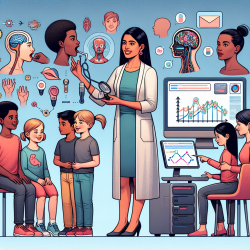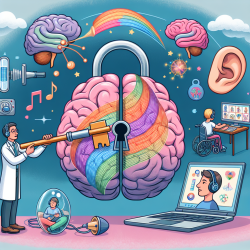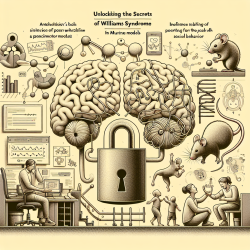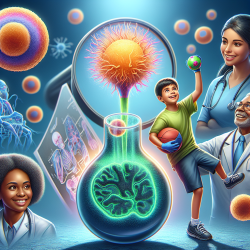Harnessing Deep Learning for Better Speech Therapy Outcomes
In the ever-evolving field of speech language pathology, leveraging advanced technologies like deep learning can significantly enhance therapeutic outcomes for children. Drawing inspiration from the research on "Seasonal Arctic sea ice forecasting with probabilistic deep learning," we can explore how similar methodologies can be applied to speech therapy to improve accuracy and effectiveness.
Understanding the Research
The research introduces IceNet, a deep learning system designed to forecast Arctic sea ice with greater accuracy than traditional models. By training on extensive climate simulations and observational data, IceNet outperforms existing models, particularly in predicting extreme sea ice events. This probabilistic approach offers a nuanced understanding of sea ice dynamics, which can be mirrored in speech therapy practices.
Applying Deep Learning in Speech Therapy
Speech therapists can adopt similar deep learning techniques to predict and analyze speech patterns and outcomes. Here are some ways to implement these insights:
- Data Collection and Analysis: Just as IceNet uses historical climate data, speech therapists can utilize extensive datasets of speech patterns to train models. This data-driven approach can identify trends and predict outcomes, allowing for more personalized therapy plans.
- Probabilistic Forecasting: By adopting probabilistic models, therapists can better understand the likelihood of various speech outcomes. This approach provides a clearer picture of a child's progress and potential challenges, enabling targeted interventions.
- Real-Time Adjustments: Deep learning models can continuously update predictions based on new data, similar to how IceNet refines its forecasts. This capability allows therapists to adjust therapy plans in real-time, ensuring they remain aligned with the child's evolving needs.
Encouraging Further Research
While the parallels between Arctic sea ice forecasting and speech therapy may seem distant, the underlying principles of deep learning and data analysis are universally applicable. Practitioners are encouraged to delve deeper into this research area, exploring how these advanced technologies can transform speech therapy practices.
For those interested in the technical aspects and potential applications of deep learning in speech therapy, further research is recommended. Exploring interdisciplinary collaborations and engaging with data scientists can provide new insights and innovative solutions.
Conclusion
By embracing the power of deep learning, speech therapists can enhance their practice, leading to improved outcomes for children. The journey from Arctic sea ice forecasting to speech therapy highlights the transformative potential of technology when applied thoughtfully and creatively.
To read the original research paper, please follow this link: Seasonal Arctic sea ice forecasting with probabilistic deep learning.










